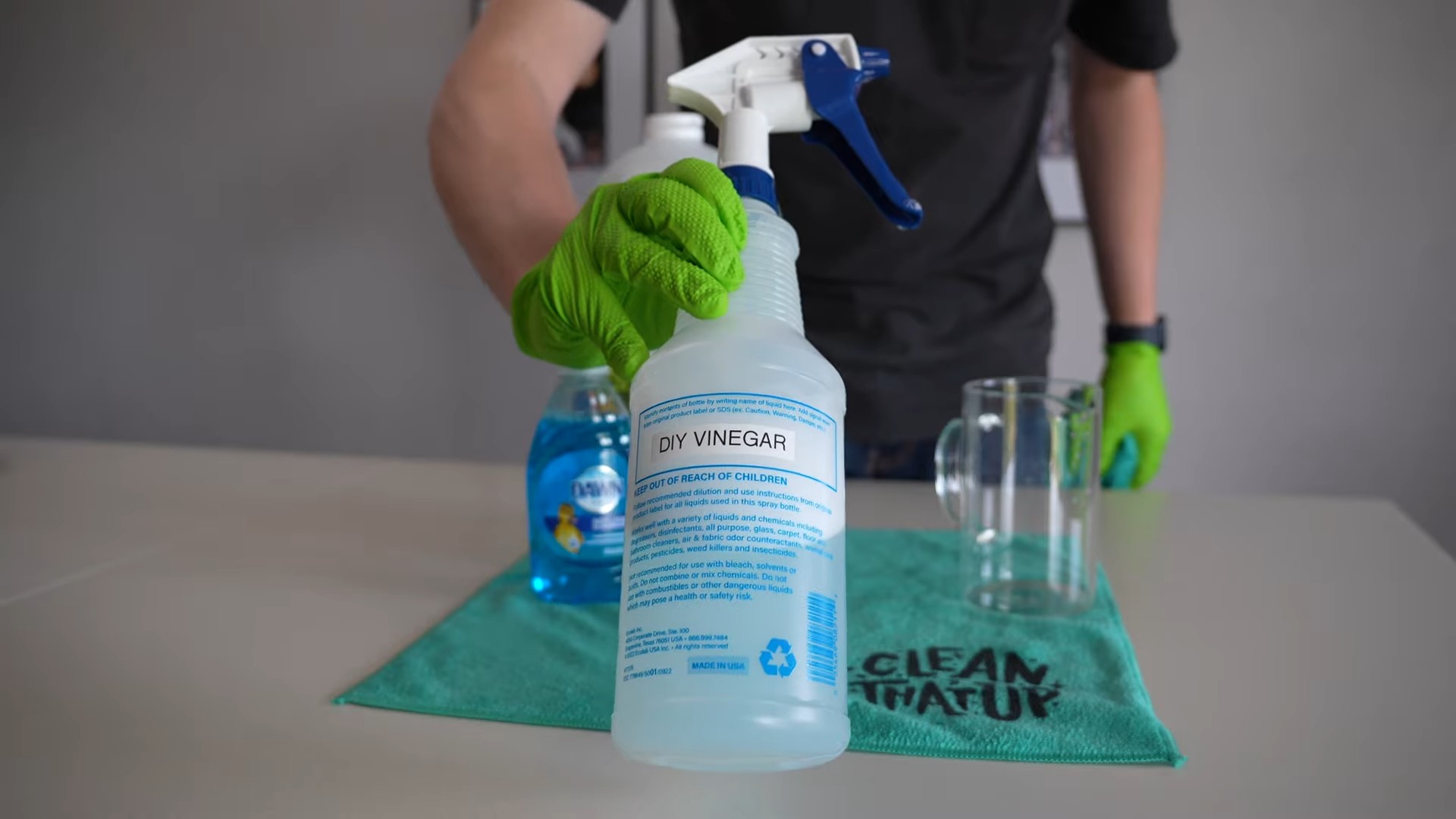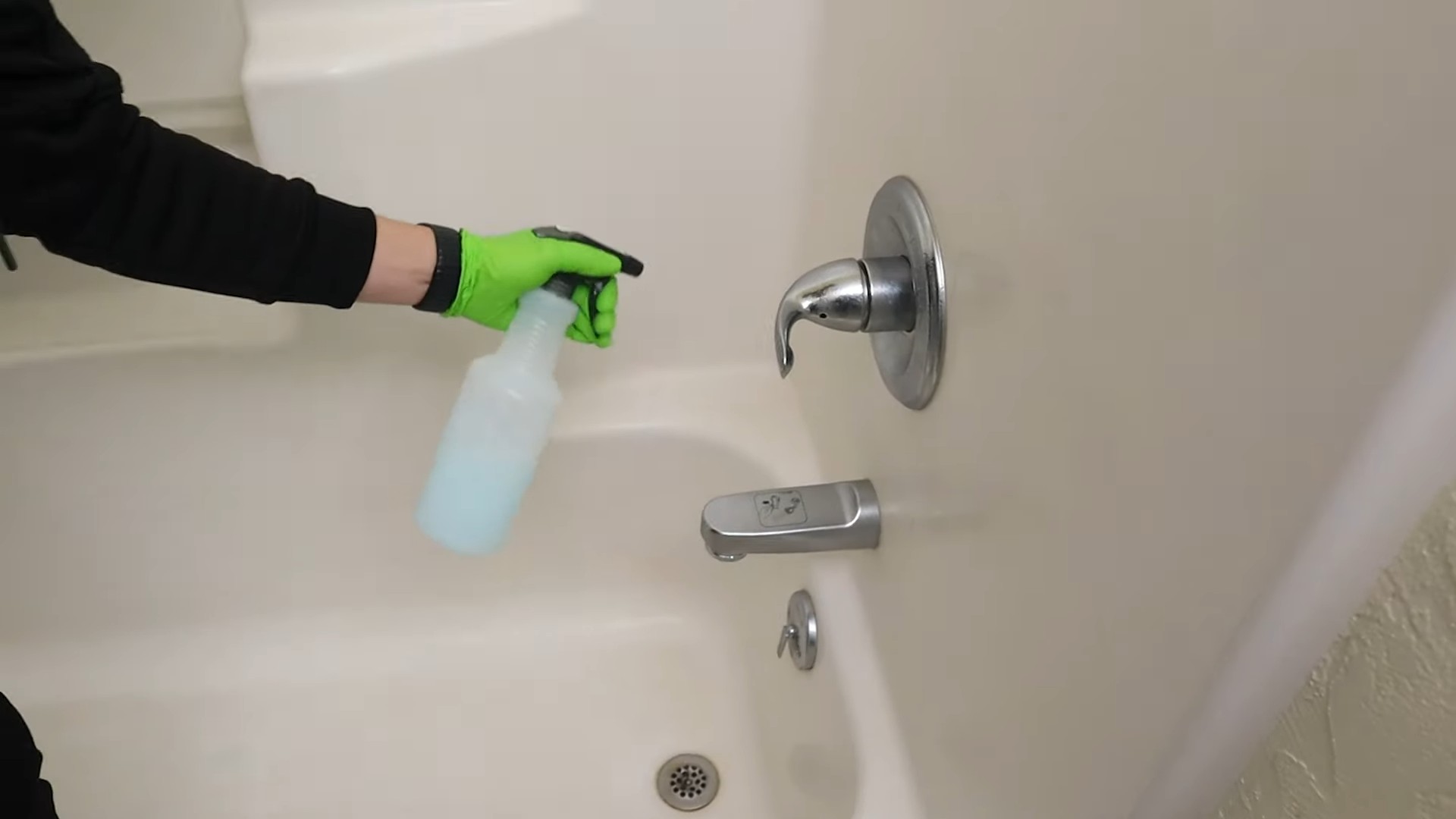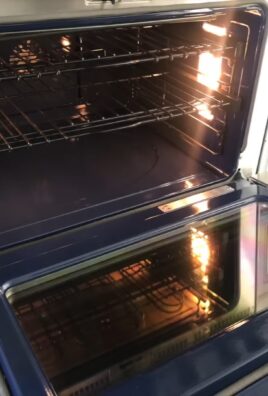Vinegar cleaning routine tips – who knew something so simple could unlock a world of sparkling clean possibilities? I’m always on the lookout for effective, eco-friendly ways to keep my home fresh, and let me tell you, vinegar is a game-changer! For centuries, vinegar has been a staple in households, not just for cooking, but also for its incredible cleaning power. Think back to your grandmother’s cleaning rituals – chances are, vinegar played a starring role.
But why is it still so relevant today? Well, in our modern world, we’re bombarded with harsh chemicals and complicated cleaning products. Many of us are searching for simpler, more natural solutions. That’s where these vinegar cleaning routine tips come in. I’m going to share some of my favorite DIY hacks that will not only save you money but also reduce your exposure to potentially harmful substances.
Imagine a home that smells fresh and clean without the overpowering scent of artificial fragrances. Picture yourself tackling tough stains and grime with a simple, readily available ingredient. This article is your guide to unlocking the cleaning potential of vinegar and creating a healthier, happier home. So, grab your bottle of vinegar, and let’s get started!

DIY Vinegar Cleaning Powerhouse: My All-Natural Home Cleaning Guide
Hey everyone! I’m so excited to share my go-to cleaning routine using the magic of vinegar. It’s cheap, effective, and eco-friendly – a win-win-win! I’ve been using vinegar for years, and I’m constantly amazed by its versatility. Forget harsh chemicals; let’s harness the power of this natural cleaner!
Why Vinegar?
Before we dive in, let’s talk about why vinegar is such a cleaning superstar. It’s a mild acid, which makes it fantastic for cutting through grease, dissolving mineral deposits, and killing bacteria. Plus, it’s readily available and super affordable. I always keep a gallon jug on hand!
What You’ll Need:
* White distilled vinegar (the star of the show!)
* Spray bottles (I like to have a few dedicated to different cleaning tasks)
* Microfiber cloths (they’re absorbent and won’t scratch surfaces)
* Baking soda (for extra cleaning power and deodorizing)
* Essential oils (optional, for a pleasant scent)
* Water
* Measuring cups and spoons
* Old toothbrush (for scrubbing tight spots)
* Squeegee (for windows and mirrors)
* Bucket (for larger cleaning projects)
General Vinegar Cleaning Solution: My All-Purpose Spray
This is my go-to solution for everyday cleaning. It’s safe for most surfaces, but always test in an inconspicuous area first, just to be safe!
Ingredients:
* 1 part white distilled vinegar
* 1 part water
* Optional: a few drops of your favorite essential oil (I love lemon, lavender, or tea tree)
Instructions:
1. Mix it up: In a spray bottle, combine the vinegar and water. If you’re using essential oils, add them now.
2. Shake well: Give the bottle a good shake to ensure everything is mixed properly.
3. Spray and wipe: Spray the solution onto the surface you want to clean and let it sit for a minute or two.
4. Wipe clean: Use a microfiber cloth to wipe the surface clean. For stubborn spots, you might need to scrub a little.
Cleaning Specific Areas with Vinegar: My Detailed Guide
Now, let’s get into the nitty-gritty of cleaning different areas of your home with vinegar. I’ll share my tried-and-true methods for each space.
Cleaning the Kitchen: Grease and Grime Be Gone!
The kitchen is a breeding ground for grease and grime, but vinegar can handle it!
1. Countertops: Use the general vinegar cleaning solution to wipe down your countertops after each use. For tougher stains, let the solution sit for a few minutes before wiping. Important: Avoid using vinegar on granite or marble countertops, as it can etch the surface.
2. Sink: Sprinkle baking soda into the sink and then pour vinegar over it. Let it fizz for a few minutes, then scrub with a sponge or brush and rinse with water. This is great for removing stains and odors.
3. Microwave: Heat a cup of water with a tablespoon of vinegar in the microwave for a few minutes. The steam will loosen any stuck-on food, making it easy to wipe clean.
4. Oven: Make a paste of baking soda and water and spread it all over the inside of your oven. Let it sit overnight. The next day, spray the paste with vinegar and wipe away the grime. You might need to scrub a bit, but it’s much easier than using harsh oven cleaners.
5. Dishwasher: Once a month, run an empty dishwasher cycle with a cup of vinegar in the top rack. This will help remove mineral deposits and keep your dishwasher running smoothly.
6. Cutting Boards: After each use, wipe down your cutting boards with vinegar to kill bacteria.
7. Coffee Maker: Fill the water reservoir with a solution of half vinegar and half water. Run a brewing cycle, then run two cycles with plain water to rinse. This will remove mineral buildup and improve the taste of your coffee.
Cleaning the Bathroom: Sparkling Clean and Fresh
Vinegar is a fantastic disinfectant and deodorizer, making it perfect for the bathroom.
1. Shower and Tub: Spray the shower and tub with the general vinegar cleaning solution after each use to prevent soap scum buildup. For tougher soap scum, heat the vinegar in the microwave for a minute or two before spraying.
2. Toilet: Pour a cup of vinegar into the toilet bowl and let it sit for at least 30 minutes, or even overnight. Then, scrub with a toilet brush and flush. This will remove stains and odors.
3. Showerhead: Fill a plastic bag with vinegar and secure it around the showerhead with a rubber band. Make sure the showerhead is submerged in the vinegar. Let it soak overnight, then remove the bag and run the shower to flush out any remaining vinegar. This will remove mineral deposits and improve water flow.
4. Mirrors: Spray mirrors with the general vinegar cleaning solution and wipe clean with a microfiber cloth or squeegee. This will leave them streak-free.
5. Bathroom Sink: Use the same method as the kitchen sink – baking soda followed by vinegar.
Cleaning Windows and Mirrors: Streak-Free Shine
Say goodbye to streaks with my simple vinegar window cleaning solution!
Ingredients:
* 1/4 cup white distilled vinegar
* 2 cups water
* Optional: a few drops of dish soap
Instructions:
1. Mix it up: Combine the vinegar, water, and dish soap (if using) in a spray bottle.
2. Spray and wipe: Spray the solution onto the window or mirror and wipe clean with a microfiber cloth or squeegee.
3. Dry: For best results, dry the surface with a clean, dry microfiber cloth.
Cleaning Floors: Safe and Effective
Vinegar is safe for most sealed floors, but always test in an inconspicuous area first.
Ingredients:
* 1/2 cup white distilled vinegar
* 1 gallon warm water
Instructions:
1. Mix it up: Combine the vinegar and water in a bucket.
2. Mop: Mop the floor with the solution, rinsing the mop frequently.
3. Dry: Let the floor air dry.
Important: Avoid using vinegar on hardwood floors, as it can damage the finish.
Deodorizing with Vinegar: Banishing Bad Smells
Vinegar is a natural deodorizer that can eliminate a variety of odors.
1. Refrigerator: Place a bowl of vinegar in the refrigerator to absorb odors.
2. Garbage Disposal: Pour a cup of vinegar down the garbage disposal and let it sit for 30 minutes. Then, run the disposal with cold water.
3. Laundry: Add a cup of vinegar to the washing machine during the rinse cycle to freshen clothes and remove odors.
4. Pet Odors: Spray the affected area with vinegar and let it sit for a few minutes. Then, blot with a clean cloth.
Other Uses for Vinegar: Beyond Cleaning
Vinegar isn’t just for cleaning! Here are a few other ways I use it around the house:
1. Weed Killer: Spray undiluted vinegar on weeds to kill them. Be careful not to spray it on plants you want to keep, as it will kill them too.
2. Fabric Softener: Add 1/4 cup of vinegar to the fabric softener dispenser in your washing machine. It will soften your clothes and remove static cling.
3. Sticker Remover: Soak a cloth in vinegar and apply it to the sticker. Let it sit for a few minutes, then peel off the sticker.
4. Rust Remover: Soak rusty items in vinegar for several hours or overnight. Then, scrub with a brush to remove the rust.
Tips and Tricks for Vinegar Cleaning: My Expert Advice
* Always test in an inconspicuous area: Before cleaning any surface with vinegar, test it in a small, hidden area to make sure it doesn’t damage the finish.
* Don’t mix vinegar with bleach: Mixing vinegar with bleach can create toxic fumes.
* Use white distilled vinegar: Other types of vinegar may contain dyes or other ingredients that could stain surfaces.
* Add essential oils for a pleasant scent: Vinegar has a strong odor, but you can mask it by adding a few drops of your favorite essential oil to your cleaning solutions.
* Store vinegar cleaning solutions in labeled spray bottles: This will help you keep track of what’s in each bottle and prevent accidents.
* Make your own vinegar-infused cleaning cloths: Soak microfiber cloths in a vinegar solution and store them in a sealed container. This way, you’ll always have a cleaning cloth ready to go.
* Vinegar is your

Conclusion
So, there you have it! Embracing a vinegar cleaning routine isn’t just about saving money; it’s about choosing a safer, more sustainable, and surprisingly effective way to keep your home sparkling. We’ve explored how this humble kitchen staple can tackle everything from stubborn hard water stains to lingering odors, all while minimizing your exposure to harsh chemicals.
The beauty of vinegar cleaning lies in its simplicity and adaptability. It’s a blank canvas for your cleaning needs. Feel free to experiment with different essential oil combinations to create your signature scent. Lavender and lemon offer a calming and refreshing aroma, while tea tree oil adds an extra boost of antibacterial power. You can also adjust the vinegar-to-water ratio depending on the task at hand. For heavily soiled areas, a stronger concentration might be necessary, while delicate surfaces may benefit from a more diluted solution.
Consider these variations to further personalize your vinegar cleaning routine:
* Infused Vinegar: Steep citrus peels (lemon, orange, grapefruit) or herbs (rosemary, thyme) in white vinegar for a few weeks to create a fragrant and potent cleaning solution. Strain before using.
* Vinegar and Baking Soda Paste: For tough stains and grime, combine vinegar and baking soda to form a paste. Apply to the affected area, let it sit for a few minutes, and then scrub clean. This is particularly effective for cleaning grout and oven interiors.
* Vinegar as a Fabric Softener: Add 1/2 cup of white vinegar to your washing machine’s rinse cycle for softer, brighter clothes. Don’t worry, the vinegar smell will dissipate during the drying process.
* Vinegar for Window Cleaning: Mix equal parts white vinegar and water in a spray bottle for streak-free windows and mirrors.
We understand that switching to a new cleaning method can feel daunting, but we encourage you to take the plunge and experience the benefits of a vinegar cleaning routine for yourself. Start with a small area or a simple task, like cleaning your microwave or descaling your showerhead. Once you see the results, you’ll be amazed at the power of this natural cleaner.
Don’t just take our word for it! We’re eager to hear about your experiences with vinegar cleaning. Share your tips, tricks, and favorite recipes in the comments below. Let’s build a community of eco-conscious cleaners who are passionate about creating a healthier and happier home. What worked for you? What challenges did you face? Your feedback will help others discover the magic of vinegar and make their own homes shine. So, grab that bottle of vinegar and get cleaning! You might be surprised at how much you enjoy it.
Frequently Asked Questions (FAQ)
Is vinegar safe to use on all surfaces?
While vinegar is a versatile cleaner, it’s not suitable for all surfaces. Avoid using it on natural stone surfaces like marble, granite, and travertine, as the acidity can etch and damage them. It’s also best to avoid using vinegar on waxed wood furniture, as it can strip the wax finish. Always test vinegar in an inconspicuous area before applying it to a larger surface. If you’re unsure, consult the manufacturer’s instructions for the surface you’re cleaning.
Will my house smell like vinegar after cleaning?
The strong smell of vinegar is a common concern, but rest assured that the odor dissipates quickly. The vinegar smell typically disappears within an hour or two, especially if you ventilate the area well. You can also mask the vinegar smell by adding a few drops of your favorite essential oils to your cleaning solution. Citrus oils like lemon and orange are particularly effective at neutralizing the vinegar scent.
Can I mix vinegar with bleach?
Never mix vinegar with bleach! This combination creates chlorine gas, which is highly toxic and can cause serious respiratory problems, burns, and even death. Always use vinegar and bleach separately and rinse surfaces thoroughly between applications. Safety should always be your top priority when cleaning.
What type of vinegar should I use for cleaning?
White distilled vinegar is the best choice for cleaning. It’s inexpensive, readily available, and has a high acidity level, making it an effective disinfectant and degreaser. Avoid using apple cider vinegar or other types of vinegar, as they may contain sugars or other additives that can leave a sticky residue.
How do I clean my coffee maker with vinegar?
To clean your coffee maker with vinegar, fill the water reservoir with equal parts white vinegar and water. Run the coffee maker through a full brewing cycle. Then, run two cycles with fresh water to rinse away any remaining vinegar. This will remove mineral buildup and improve the taste of your coffee.
Can vinegar kill mold?
Yes, vinegar can kill mold. White distilled vinegar is about 80% effective in killing mold species. To kill mold with vinegar, spray undiluted vinegar onto the affected area and let it sit for an hour. Then, wipe the area clean with a damp cloth. For stubborn mold growth, you may need to repeat the process. Always wear gloves and a mask when cleaning mold to protect yourself from spores.
How do I clean my microwave with vinegar?
Cleaning your microwave with vinegar is easy and effective. Combine 1/2 cup of white vinegar with 1/2 cup of water in a microwave-safe bowl. Microwave on high for 5-7 minutes, or until the solution boils and the microwave is filled with steam. Let the bowl sit in the microwave for a few minutes to allow the steam to loosen any stuck-on food particles. Then, carefully remove the bowl and wipe the inside of the microwave clean with a damp cloth.
Can I use vinegar to clean my dishwasher?
Yes, you can use vinegar to clean your dishwasher. Pour one cup of white vinegar into the bottom of your empty dishwasher. Run the dishwasher on a hot cycle. This will help to remove mineral buildup, grease, and food particles, leaving your dishwasher clean and fresh.
How often should I clean with vinegar?
The frequency of cleaning with vinegar depends on the area and your personal preferences. For general cleaning, you can use vinegar once or twice a week. For specific tasks like descaling your showerhead or cleaning your coffee maker, you may only need to do it once a month or as needed.
Is vinegar environmentally friendly?
Yes, vinegar is an environmentally friendly cleaning option. It’s a natural and biodegradable substance that doesn’t contain harsh chemicals or toxins. By using vinegar for cleaning, you can reduce your reliance on synthetic cleaning products and minimize your impact on the environment.





Leave a Comment